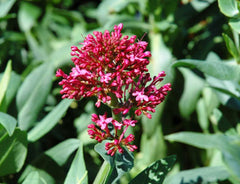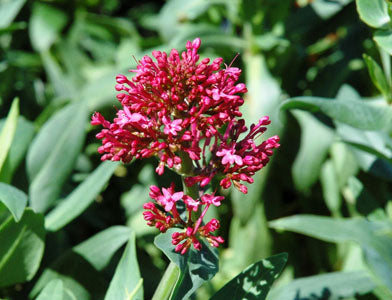Jupiters Beard (Centranthus)
Jupiters Beard Plant Features
Butterflies and hummingbirds will flock to your yard when the bright, carmine-red flower heads of Jupiter's beard, occasionally called red valerian, burst into bloom. This easy-care perennial blooms in early summer and is drought and disease resistant. The plants grow 24 to 36 inches tall and thrive in full sun or partial shade. Jupiter's beard spreads quickly and can be used to help control erosion on steep slopes. Hardy from zones 5-8.Jupiter's Beard Questions?
Email us and one of our perennial experts will get back to you.
Jupiters Beard Growing Instructions
Jupiter's beard is an easy-going plant. It doesn't mind poor soil, partial shade, or inconsistent watering. But, because Jupiter's beard can become invasive, plant it where you can control it if it starts to spread. It's also smart to remove faded flower heads to prevent the plant from spreading seeds throughout your flower border. Jupiter's beard may suffer in more humid parts of its range. Plants will be less vigorous in these areas. The flowers work well in cut bouquets.This plant is not intended for animal or human consumption.
-
Water
Medium water needs
-
Light
Outside: Part sun
Outside: Sun
-
Colors
Pink
Red
-
Special Features
Attracts butterflies
Attracts hummingbirds
Fragrant flowers/foliage
Groundcover
Super-easy to grow
Complement your Jupiters Beard
CoreopsisThe yellow flowers of Coreopsis look great interplanted with the red or pink flowers of Jupiter's Beard.
Daylily
Daylily and Jupiter's Beard can be used together to tame a hard-to-mow sunny slope.
Phlox, Garden
The tall fragrant blooms of Garden Phlox are a good partner for Jupiter's Beard.

